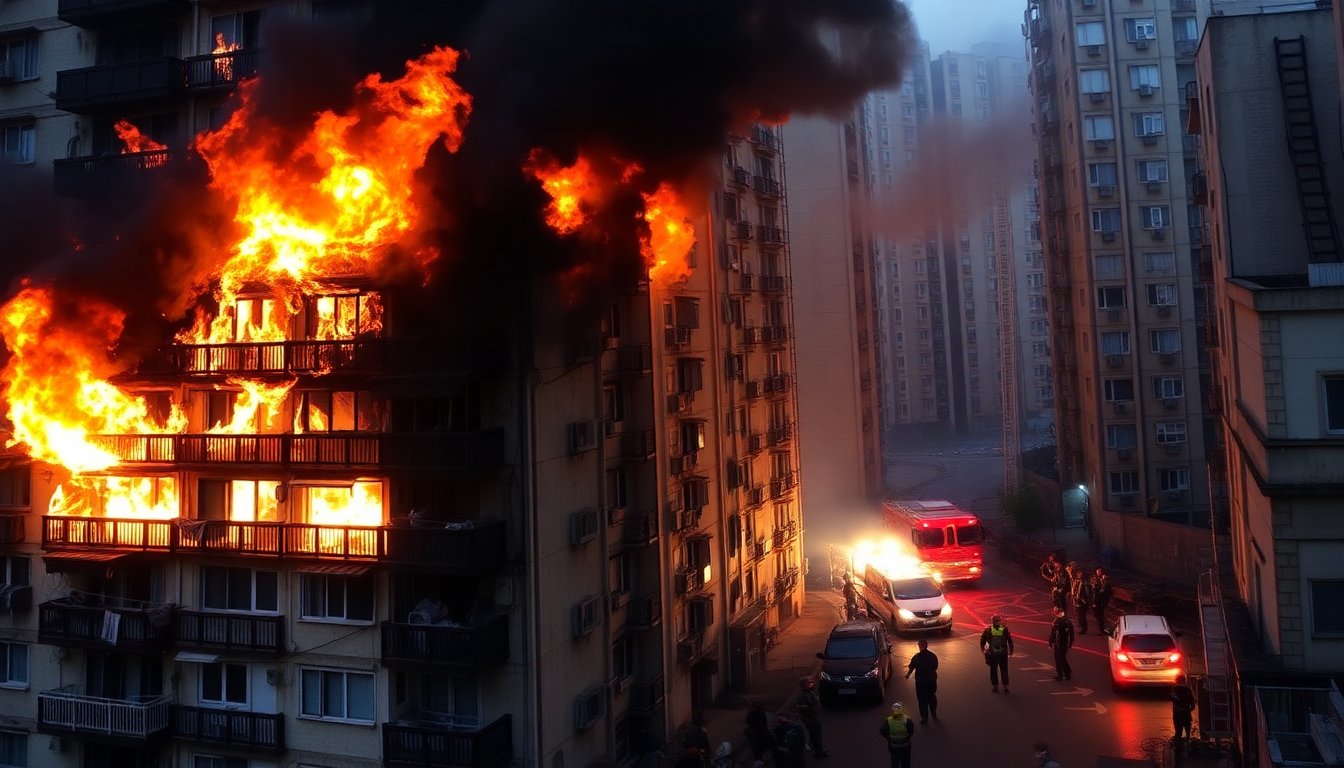Table of Contents
The recent fire that engulfed a high-rise residential building in Hong Kong’s Tai Po district has become a grim chapter in the city’s history, marking one of the deadliest blazes in over a century. With at least 55 confirmed fatalities and many more unaccounted for, the tragedy has sparked widespread concern regarding fire safety regulations and construction practices.
This incident occurred in the Wang Fuk Court complex, where ongoing renovation work was reportedly underway. The fire broke out around 2:51 PM local time and quickly escalated, raising alarms that had not been triggered during the initial chaos.
Sequence of events leading to disaster
Eyewitness accounts reveal that the fire originated from the bamboo scaffolding on the exterior of one of the buildings. This type of construction material is known for its flammability, and the flames rapidly climbed the structure, fueled further by nearby construction netting that also caught fire. By 3:34 PM, the blaze had reached a level four alarm, and within two hours, it escalated to the highest alert status, level five.
Emergency services faced significant challenges in their response. Despite the mobilization of over 1,200 fire and ambulance personnel, rescuers struggled to access the upper floors due to intense heat and collapsing debris. The situation was compounded by windy conditions that facilitated the fire’s spread, making rescue operations perilous.
Victims and community response
As of Thursday morning, the confirmed death toll stood at 55, with many families anxiously awaiting news of their loved ones. Among those affected, a 65-year-old resident recounted leaving his dog behind as he fled the flames, reflecting the anguish that many residents experienced during the evacuation process. The distress was palpable as neighbors rushed to alert one another, as the fire alarm system failed to function.
The emotional toll on the community is immense, with residents expressing their heartbreak over lost lives and unanswered questions about the safety of their homes. Local authorities have reported that approximately 279 individuals remain unaccounted for, and the community has rallied to support those displaced by the fire.
Investigation into safety practices
In the wake of this catastrophe, investigations have commenced to ascertain the causes of the fire and the negligence that may have contributed to its rapid escalation. Authorities have arrested three individuals connected to the construction company responsible for the renovation work, citing potential gross negligence in adhering to safety standards.
Initial reports have indicated that styrofoam materials were present in the building’s construction, raising red flags regarding compliance with fire resistance regulations. Senior Superintendent Eileen Chung has stated that the use of these materials could have significantly accelerated the fire’s growth.
Looking ahead: Safety reassessments
In response to the tragedy, government officials have pledged to conduct thorough inspections of all housing estates undergoing renovations across the city. John Lee, Hong Kong’s leader, has emphasized the need for urgent reviews of safety protocols, particularly concerning scaffolding and building materials used in construction.
As the city grapples with grief, the focus shifts toward ensuring that such a disaster does not recur. The lessons learned from this devastating event will be crucial in reshaping safety standards and emergency preparedness protocols for high-density residential buildings in Hong Kong.
The fire at Wang Fuk Court will undoubtedly remain a stark reminder of the vulnerabilities present in urban living environments, highlighting the critical importance of stringent fire safety measures and responsible construction practices.


